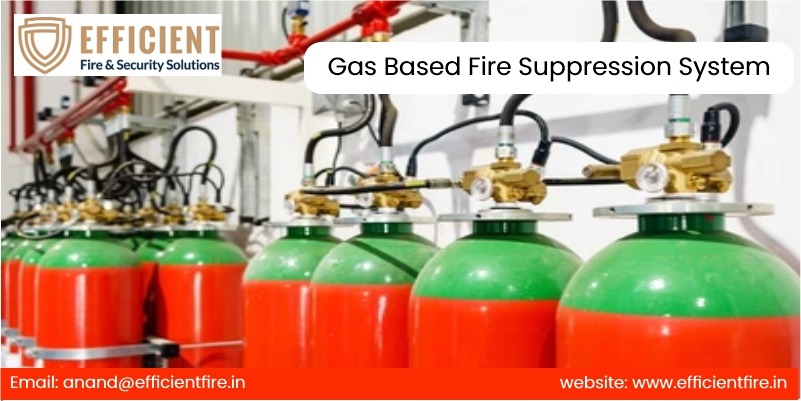

Exploring Gas-Based Fire Suppression Systems: Applications and Benefits
Gas-based fire suppression systems are advanced fire protection solutions designed to extinguish fires quickly and effectively while minimizing damage to property and equipment. Efficient fire is best Gas Based Fire Suppression System manufacturer, Gas Based Fire Suppression System Supplier Company in Pune, Maharashtra, India.
In this article, we will delve into the principles, applications, and advantages of gas-based fire suppression system in various industrial and commercial settings.
Understanding Gas-Based Fire Suppression Systems
Gas based fire suppression system utilize inert gases or chemical agents to suppress fires by reducing the oxygen concentration below the level required to sustain combustion. These systems are particularly suited for enclosed spaces where traditional water-based suppression methods may not be feasible or could cause damage to sensitive equipment..
Types of Gas-Based Fire Suppression Systems
1. Inert Gas Systems:
1 ) Inert gas systems, such as nitrogen, argon, or carbon dioxide, work by displacing oxygen from the fire-affected area, effectively suffocating the flames.
2) These systems are suitable for protecting valuable assets and critical infrastructure in environments where water-based suppression methods are impractical or pose a risk of collateral damage.
2. Clean Agent Systems:
1) Clean agent systems utilize chemical agents, such as FM-200 (HFC-227ea) or Novec 1230, which are electrically non-conductive and leave no residue after discharge.
2) These systems are ideal for protecting sensitive electronic equipment, server rooms, data centers, and archival storage facilities where water or other extinguishing agents could cause irreparable damage.
Applications of Gas-Based Fire Suppression Systems
Gas-based fire suppression systemfind applications in various industries and environments, including:
1. Data Centres and Server Rooms:Gas-based systems are commonly used to protect critical IT infrastructure from fire-related damage while minimizing downtime and data loss.
2. Telecommunication Facilities: Telecommunication facilities, including cell towers and switching stations, rely on gas-based suppression systems to safeguard equipment and ensure uninterrupted service.
3. Museums and Archives: Gas-based systems are employed in museums, art galleries, and archival storage facilities to protect valuable artifacts, documents, and historical records.
4. Industrial Facilities: Gas-based suppression systems are utilized in manufacturing plants, chemical processing facilities, and power generation plants to protect equipment and mitigate the risk of fire-related disruptions.
Advantages of Gas-Based Fire Suppression Systems
1. Rapid Suppression: Gas-based systems can extinguish fires quickly, minimizing fire damage and reducing downtime in critical operations.
2. Clean Extinguishing Agents: Clean agent systems leave no residue after discharge, eliminating the need for costly clean-up and minimizing equipment damage.
3. Non-Conductive: Gas-based agents are electrically non-conductive, making them safe for use in environments containing sensitive electronic equipment.
4. Environmentally Friendly: Inert gases and clean agents used in gas-based suppression systems are environmentally friendly and pose no threat to the ozone layer.
Conclusion
Gas based fire suppression system offer an effective and reliable solution for protecting critical assets, equipment, and facilities from fire-related risks. By understanding their applications, advantages, and proper deployment, businesses and organizations can enhance their fire protection strategies and minimize the potential impact of fire incidents on operations and assets.

Leave a comment
All fields marked with an asterisk (*) are required